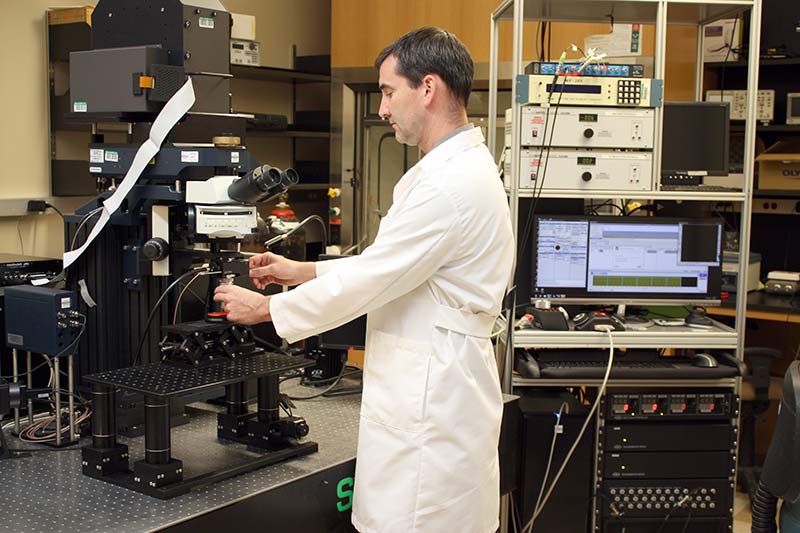Research Focus on Dr. Prakash Kara
For the past 25 years, researchers have used functional magnetic resonance imaging (fMRI) to determine how different regions of the brain are involved in processing a wide variety of sensory inputs and behavioral outputs. However, because the fMRI signals are based on blood flow changes, they only provide an indirect measure of neural activity. Therefore, understanding the coupling between vascular signals and the underlying neural activity remains fundamental question in neuroscience. This is crucial not only for interpreting fMRI signals but also to better understand neurological diseases and brain damage in which neurovascular coupling breaks down.
A team at the Medical University of South Carolina led by Dr. Prakash Kara now plans to use state-of-the-art optical tools to shed new light on the question of neurovascular coupling. The team was awarded a $4 million grant from the National Science Foundation through its Experimental Program to Stimulate Competitive Research (EPSCoR), and includes a collaboration with the University of Alabama primate facility who will provide parallel investigation with primates.
fMRI signals are quite slow and the spatial resolution is on the order of millimeters. This has limited scientists’ ability to compare neural and vascular activity directly. Using two-photon microscopy, our team will measure neural and vascular signals with single-cell and single-vessel resolution. While measuring this activity, we will simultaneously stimulate neurons with single-cell precision using two-photon optogenetics. By carefully titrating the number of active neurons, we can correlate the vascular responses with the underlying neural activity in unprecedented detail. We will be able to determine how the overall amount of neural activity and the location of that activity relative to individual vessels influence those vessels’ responses.
In addition to the potential for gaining fundamental insights into neurovascular coupling, the grant is providing funds for cutting edge optical instruments. Optical techniques have revolutionized neuroscience over the last decade and their influence continues to grow with refinements and breakthroughs in equipment and data management. This grant helps position MUSC to be at the forefront of this new generation of neuroscience technology.
The award will fund more than equipment and lab work. The project includes an educational component that is led by Furman University, teaching high school teachers and students about the importance and future of optical neuroscience. Through both its scientific and educational objects, the project creates employment opportunities within South Carolina and Alabama.
Project investigators include:
- Prakash Kara, Principal Investigator
- Peter Kalivas, Former Principal Investigator
- Paul Gamlin, Co-Principal Investigator
- Lawrence Sincich, Co-Principal Investigator
- John Sweatt, Former Co-Principal Investigator
- Prakash Kara, Former Co-Principal Investigator
Project Title: NSF RII Track-2 FEC: Bridging Cognitive Science and Neuroscience Using Innovative Imaging Technologies. Click here to read the NSF Project Abstract.
Click download PDF of Research Focus on Dr. Prakash Kara
September 27, 2017